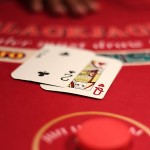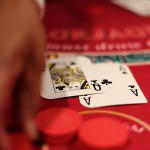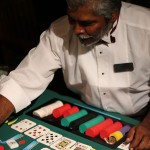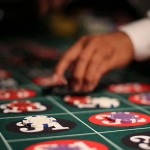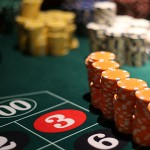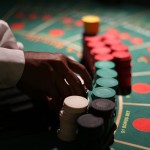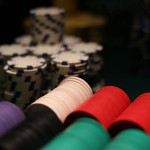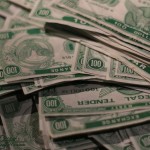
Tag: 50mm
Full Macro
One of the real advantages of the mirrorless cameras, like my little EOS-M, is the ability to mount just about any lens. The small cameras have very shallow back focus requirements, the distance from the lens mount to the sensor. With the correct adapter they can mount the old Canon FD, Nikon, Leica, anything! I find myself unpacking my old photo gear, and wondering about the possibilities.
I do have some really good old Canon and Nikon primes around, lenses from the manual focus days. When I assembled an EOS-M to FD adapter, an extension tube, and a 50mm f/1.4 lens onto the front of the camera it resulted in a rather odd looking setup. Odd looking, but it works, providing an impressive macro capability. With better than 1:1 magnification I was able to keep a reasonable depth of field in the test shots. I need try some tests with the 100mm f/2.8 lens, for even higher magnification.
Aside from the FD to EOS-M adapter this is all gear I had sitting about unused. I never used it much in my film days. Digital is different, the ability to examine the result immediately and the elimination of per frame costs enables an ease of experimentation that was not there before. I am going to play with this a bit!

Casino Night Photography
Last night was the company Christmas party. We did something different this year, a casino night. A full set of dealers and tables awaited us at the Mauna Lani clubhouse for the evening. Signing in at the door everyone received a stack of play money and the fun began.
It was fun in two ways… Playing the games! Everyone seemed to have a great time, particularly with no real money at stake. I noted that we were all quite conservative at the start, as the evening progressed the bets became risky and the money began to really fly about.
It was also fun because I thought to bring the new camera. I know of no real casino that would let me take pictures of the games like this. Alas, this was not real. There was the added advantage that everyone knows me and knows how I use the camera. I did get good photos of more than a few people. Photos I will have to process up and distribute over the next few days.
A full frame camera with a fast lens was just what was needed for the evening. I only brought the one lens… A 50mm f/1.8 prime, the nifty fifty. It turned out to be the perfect lens for the evening. The lighting was dim, to be expected, but it was also very hard. Small quartz spots illuminated most of the gaming tables resulting in bright areas and dark backgrounds.
To the hard lighting I added the very shallow depth-of-field that comes with a fast lens and large sensor camera. The result was perfect, very moody shots of the game with fantastic bokeh…
Using the Nifty Fifty
Some photo instructors advocate using only a fifty millimeter fixed focal length lens as a creative exercise. A nice idea for an exercise, but I really did not want to do this while on an extended trip along the Alaskan and British Columbia coast by boat.

Looking to pack light I had taken only three lenses to accompany the Canon 60D that would travel with me. This set included a Canon EF-S 17-85mm f/4-5.6 IS USM Lens, a 70-200mm f/4 L series telephoto, and a 50mm f/1.8. The 50mm was almost left behind, I grabbed it on a whim while packing realizing that it took up very little room.
It was a few days into the trip when trouble appeared. I began to get occasional errors when using the 17-85mm, the camera complaining about a lens communication error. After a day this became a serious issue, the camera refusing to take photos with the lens. The other lenses worked fine, thus I was sure the trouble was in the lens, not the camera.

A couple more days and even that solution failed, the lens just jammed up entirely, with the aperture stop about halfway closed.
I was down to the the telephoto and the 50mm… Time to get creative.
The 50mm lens is interesting. It is small. It feels like you have forgotten to put a lens on the camera. It is sharp! The lens may be the cheapest lens Canon sells, just over $100, but there is nothing to complain about in the performance, crisp and sharp photos from corner to corner. It is fast. The very fast f/1.8 ratio allows for photos in low light conditions as well as providing a wonderfully shallow depth of field when you want it.
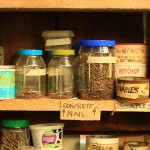
I did have my little Canon G11 along, giving me some capability with a zoom lens. But I really wanted to shoot with the DSLR and the higher photo quality offered by the big lens and larger sensor when the photo really mattered.
On an APS-C camera like the Canon 60D there is a 60% crop factor, converting a 50mm to a mild telephoto. With a fixed focus I had to control the field through positioning myself instead of adjusting the camera. I do wonder if I got better shots as I had to become more involved and plan the shot?
I did take some great shots with the 50mm. Going through the 1,800+ photographs from the cruise I am quite happy with a number of them. An unintentional creative exercise, but a successful one.
Postcard from the Universe – Galactic Center
The last time out I fitted a camera ball mount to the counterweight shaft of the Losmandy mount. This allowed me to shoot an additional camera at the same time, along with the camera attached to the telescope. The second camera can be aimed at a different target completely. With a relatively wide angle lens, tracking errors become insignificant.
With the center of the Milky Way high overhead it made an obvious first target to test this wide-field setup. The results are quite nice, a series of one minute exposures reveal the star clouds in fine detail. The camera for this run was the Canon 60D, as the 20Da was shooting the Lagoon at the time. I need to swap places and try the shot again with the 20Da to see what the Hα sensitivity reveals, capturing more of the nebulae that is mingled with the stars.
The lens was an older Nikon 50mm f/1.8 stopped down to f/2.8, nice round star images right into the corners of the frame. Yes, a Nikon lens mounted to a Canon camera, you can do that. A very nice lens, I will be using it again for this work.


